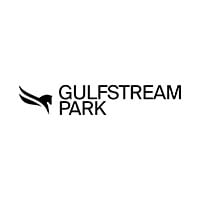
- Our Insights
- Best Practices for Optimizing Contact Center Operations
Intro
A well-managed contact center is essential for delivering exceptional customer service and maintaining customer satisfaction. Whether you're looking to improve your existing contact center or set up a new operation, these best practices and tips will guide you toward success.
Attract and Train Top Talent
The success of your contact center starts with hiring the right people. Look for individuals with relevant skills, such as effective communication and problem-solving abilities, and a positive attitude toward customer service. Don’t focus on whether they have worked in a contact center before those skills are easily trained. Once you've assembled your team, provide them with comprehensive training on your company's standards and customer service best practices. Continuous coaching and both providing feedback and welcoming suggestions to improve the customer experience will empower your agents to handle customer calls effectively.
Define Roles and Responsibilities
To ensure smooth operations, establish clear roles and responsibilities for each team member. Differentiate between the manager, supervisors, and agents, and outline their specific duties. Managers should focus on evaluating customer expectations, defining supervisor and agent roles, and setting key performance indicators (KPIs). Supervisors are responsible for activities like training, monitoring agent interactions, and working toward contact center goals. Agents, on the other hand, should concentrate on direct customer communication, building reports, representing the brand, and issue resolution. Agents need to be told both how and why when receiving direction or changes from supervisors and managers. This structured approach will lead to better performance across the contact center.
Foster Open Communication
Communication is the lifeline of a successful contact center. Regularly engage with agents and supervisors to understand their needs and challenges. Encourage open dialogue through scheduled meetings, brainstorming sessions, and retreats for process improvements. Take their feedback seriously and adjust to optimize performance.
Introduce Incentive Programs
Incentive programs are powerful motivators for contact center employees. Rewarding outstanding performance with incentives, such as bonuses or recognition, boosts employee morale and encourages high-quality service during customer interactions. Consider setting both achievable results and stretch performance benchmarks to maintain a positive work environment.
Balance Scheduling and Workload
Balancing scheduling and workload is critical for maximizing productivity without compromising on service quality. Consider peak and low call hours, agent availability, and sufficient time between shifts to prevent burnout and increase the quality of customer interactions. A well-balanced schedule allows agents to recharge and deliver friendly service on each call, contributing to the overall success of your contact center.
Track and Analyze Contact Center Metrics
Tracking relevant metrics provides valuable insights into contact center performance and customer interactions. Key metrics such as Average Handle Time (AHT), First Call Resolution (FCR), and Customer Satisfaction Score (CSAT) offer actionable data for decision-making and continuous improvement. Regularly analyze these metrics to identify trends, address challenges, and implement necessary enhancements.
First Call Resolution (fcr) RATES
Definition: Refers to a key performance metric used to measure the effectiveness of a contact center or customer service department in resolving customer issues and inquiries during the first interaction with a customer.
A high FCR rate indicates that the contact center is efficient in addressing customer concerns, providing satisfactory solutions, and avoiding the need for customers to make follow-up calls or escalate their issues. It is a crucial metric in measuring customer service quality, as it reflects the ability of the contact center to meet customer needs promptly and efficiently.
A low FCR rate, on the other hand, may suggest potential areas for improvement in call handling processes, agent training, or access to resources and information needed to resolve customer issues effectively.
FCR = (Total Resolved Cases / Total Number of Cases) x 100
COST PER CALL (cpc)
Definition: A financial metric used to measure the average cost incurred by a contact center for handling each customer call. It is an essential performance indicator that helps businesses assess the efficiency and cost-effectiveness of their contact center operations.
A low CPC indicates that the contact center is managing its resources efficiently, keeping costs under control while handling a significant number of customer calls. On the other hand, a high CPC may suggest potential inefficiencies, excessive operational costs, or a need for process improvements to optimize contact center performance.
CPC = Total Calls per Period / (operating costs)
Customer Satisfaction (CSAT) Rates
Definition: A metric used to measure the level of satisfaction among customers regarding a product, service, or overall experience provided by a company. It is a crucial indicator that helps businesses understand how well they are meeting customer expectations and meeting their needs.
CSAT rates are typically collected through customer surveys or feedback forms where customers are asked to rate their satisfaction on a scale, often from 1 to 5 or 1 to 10. The higher the rating, the more satisfied the customer is with their experience.
CSAT % = (Number of Positive Scores / Number of Total Scores) x 100
Net Promoter Score (NPS)
Definition: A widely used customer loyalty metric that measures the willingness of customers to recommend a company's products or services to others. It is a valuable tool for businesses to assess customer satisfaction and gauge customer loyalty.
The NPS is typically obtained through a simple survey question that asks customers to rate, on a scale of 0 to 10, how likely they are to recommend the company to friends, family, or colleagues. Based on their responses, customers are categorized into three groups:
- Promoters (score 9-10): These are highly satisfied customers who are likely to promote the company to others and become brand advocates.
- Passives (score 7-8): These customers are satisfied but not enthusiastic. They may recommend the company if asked but are less likely to actively promote it.
- Detractors (score 0-6): These customers are unsatisfied and may even share negative feedback with others, potentially harming the company's reputation.
A positive NPS suggests that a company has a higher number of satisfied customers who are likely to recommend it, which can lead to increased customer retention and new customer acquisition through referrals. A negative NPS indicates that there is a higher proportion of unsatisfied customers, potentially highlighting areas that need improvement in the company's products or services.
NPS = % of Promoters – % of Detractors
Be Committed to Ongoing Quality Assurance and Results Reviews
Every agent, supervisor, and manager needs regular and consistent feedback. Share the story from your contact center analysis. Agents want to feel part of the bigger picture and not just their page in the book. It is important for them to know the health of the contact center, what customer reviews are saying, and where there are successes and opportunities. Encourage agents to support each other to make positive changes. Share who is playing a leading role publicly and allow others to celebrate their success. Constructive coaching should of course is done privately and always off of the contact center floor.
Invest in Technology
It is crucial to make strategic investments in technology that not only optimize operations but also ensure redundancy and security. Advanced contact center tools can significantly enhance your contact center's efficiency and productivity, providing valuable features such as data management, call recording, call monitoring, skill-based routing, and interactive voice response (IVR). These tools empower your agents to provide top-notch customer support.
Redundancy in technology is equally important to maintain uninterrupted contact center services. Implementing redundant systems and backup solutions can prevent downtime and ensure continuous operation even in the event of technical failures or unexpected disruptions. Redundant data centers, backup power sources, and failover mechanisms are critical components of a robust contact center infrastructure.
Moreover, contact centers handle vast amounts of sensitive customer data, making security paramount. With the rising number of cyber threats, investing in robust data security measures is non-negotiable. Employ encryption protocols, multi-factor authentication, and access controls to safeguard customer information from unauthorized access and potential data breaches. Regular security audits and employee training on cybersecurity best practices will further bolster your contact center's resilience against security threats.
By prioritizing technology investments that enhance efficiency, redundancy, and security, your contact center will be better equipped to deliver exceptional customer experiences while maintaining operational continuity and data protection.
Know the Laws in Your Area
As a contact center manager and operator, it is crucial to be well-versed in local, state, and federal laws pertaining to operations and ensure strict compliance. One crucial aspect is adhering to regulations such as the National Do Not Call Registry (NDNCR), which maintains a database of individuals who have requested not to be contacted by telemarketers. Understanding and adhering to such regulations will help you avoid penalties and potential legal issues.
For businesses operating in the European Union or dealing with EU residents' data, compliance with the General Data Protection Regulation (GDPR) is of utmost importance. Ensure that your contact center operations align with GDPR guidelines regarding the collection, storage, and processing of personal data. Implement robust data security measures, including encryption and access controls, to safeguard sensitive customer information from unauthorized access and potential data breaches.
Additionally, be aware of other data protection laws and regulations that may apply to your contact center, depending on your location and the regions you serve. Staying updated with evolving data privacy laws is crucial to maintaining a trustworthy reputation and avoiding legal repercussions. Collaborate with legal experts or data protection officers to develop comprehensive policies and procedures that align with these regulations and prioritize the security and privacy of customer data throughout your contact center operations.
If you are uncertain about the specific laws in your area, seeking guidance from legal experts or consulting an attorney will ensure that your contact center operates within the boundaries of the law.
Conclusion
By implementing these best practices and consistently optimizing your operations, your contact center will be well-positioned to deliver exceptional customer service and drive customer satisfaction to new heights.
LET'S GET TO WORK









